 Who is the blogger?
Who is the blogger?
To see a simple English version of reviews about some of the movies, click on the ESL section of Midnight Oil.
Entries by Catherine Savard (118)
Laura (1944)
Picture Perfect
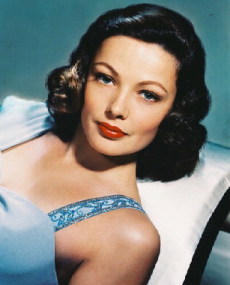 Gene Tierney’s breathtaking beauty in the title role adds to the performance of the ensemble cast accompanied by the memorable score composed by David Raksin. It all goes together to make this unforgettable classy film noir classic. TVOntario’s Interviews, (Aug.18,’07) include contributions from the leading man, Dana Andrews and director, Otto Preminger. The Interviews contain revelations into the evolution of this wonderful film that are almost as enjoyable as the plot reversals contained in the film itself .
Gene Tierney’s breathtaking beauty in the title role adds to the performance of the ensemble cast accompanied by the memorable score composed by David Raksin. It all goes together to make this unforgettable classy film noir classic. TVOntario’s Interviews, (Aug.18,’07) include contributions from the leading man, Dana Andrews and director, Otto Preminger. The Interviews contain revelations into the evolution of this wonderful film that are almost as enjoyable as the plot reversals contained in the film itself .
See the "Laura" Video Trailers here
My tastes in home décor definitely run toward the classic . A mantle clock under glass sports 19th century ladies and gents caught up in an eternal circular dance. A finely upholstered wing chair sits beside a gas fireplace accompanied by a brass table lamp inviting one to read into the late hours of the night. Lace curtains, a finely finished oval oak coffee table and a portrait of two young ladies in linen circa 1830 over the mantelpiece complete the picture.
It sounds so idyllic and serene – and so it was when I first designed it all in my mind’s eye. The original design for my living room didn’t take into account the stresses and strains of the invasions of real life: LEGO strewn around the room with my son’s creative structures filling up all available table space and more, protective throws on the furniture continually askew, cookie crumbs under the couches, the clock dancers’ whirling waltz interrupted by batteries that have ceased to function.
Ahh, this is the life. At least, this is my life.
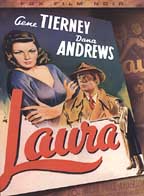 In the opening scene of the film, we first meet Laura through taking a virtual walking tour of her home. In the days before “video visits” in online real estate listings, it must have been something of a novelty to inspect the interior of another person’s home in their absence through the camera lens – a kind of early video voyeurism. Waldo Lydecker, ably played by Clifton Webb, is more than happy to oblige as the tour’s host. Lydecker’s character provides voice over commentary for the house tour and for the rest of the film.
In the opening scene of the film, we first meet Laura through taking a virtual walking tour of her home. In the days before “video visits” in online real estate listings, it must have been something of a novelty to inspect the interior of another person’s home in their absence through the camera lens – a kind of early video voyeurism. Waldo Lydecker, ably played by Clifton Webb, is more than happy to oblige as the tour’s host. Lydecker’s character provides voice over commentary for the house tour and for the rest of the film.
The camera pans over various art objects in the apartment coming to rest on an oil painting of Laura herself. The portrait is very lifelike and very beautiful (It was a photo of the dazzling Gene Tierney, painted over to look like an oil portrait). The narrator intones, “I, Waldo Lydecker, was the only one who really knew her.” As we soon learn, Lydecker has no problems assuming that his opinion is the final word, in fact the only word worth knowing, on just about any subject.
 Playing opposite Waldo Lydecker is Mark McPherson (Dana Andrews), a tight-lipped police detective who also knows his own mind, although he is perhaps less hasty in forming and reforming his opinions about a situation. Andrews plays the part of the detective as holding things very close to his chest, with hardly a ripple of emotion permitted to escape. He keeps himself calm by playing a little handheld pinball game. McPherson says that it helps him to keep his mind clear.
Playing opposite Waldo Lydecker is Mark McPherson (Dana Andrews), a tight-lipped police detective who also knows his own mind, although he is perhaps less hasty in forming and reforming his opinions about a situation. Andrews plays the part of the detective as holding things very close to his chest, with hardly a ripple of emotion permitted to escape. He keeps himself calm by playing a little handheld pinball game. McPherson says that it helps him to keep his mind clear.
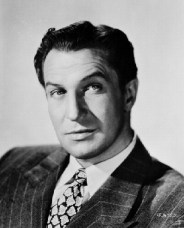 The trio of men who surround Laura is completed by Shelby Carpenter, a Southern playboy, labelled a “male beauty in distress” by Lydecker. Carpenter’s prime function in life seems to be to mooch off of those who can afford his company. His other prime function, at least in this story, is to serve as the all too obvious prime suspect in Laura’s murder. As noted in the Interviews (Aug.18,’07), a decision was made to heighten the contrasts in personality of the three male characters so that they would play off one another.
The trio of men who surround Laura is completed by Shelby Carpenter, a Southern playboy, labelled a “male beauty in distress” by Lydecker. Carpenter’s prime function in life seems to be to mooch off of those who can afford his company. His other prime function, at least in this story, is to serve as the all too obvious prime suspect in Laura’s murder. As noted in the Interviews (Aug.18,’07), a decision was made to heighten the contrasts in personality of the three male characters so that they would play off one another.
As for the character of Laura herself, it seems to be a case of “absence makes the heart grow fonder”. Her conspicuous absence during the first part of the film adds all the more mystery to her character and suspense to the plotline. Laura seems to be altogether too lovely to be real; the “girl next door”, an independent self-made woman, smart and sexy, sweet and sophisticated.
 Laura is a lot like the theme music that David Raksin has composed for her . The repetition of the “Laura” theme music, although it comes up over and over again in different settings and at different tempos, is never tiresome, but somehow manages to add to the haunting beauty of Laura herself. No wonder detective Mark McPherson falls for her like a ton of bricks, sight unseen. In fact, everyone around Laura seems to be bewitched by her. They all adore her from Betsy the parlour maid to that cranky old columnist, Lydecker, who seems so full of himself that there couldn’t possibly be room in his life for anyone else.
Laura is a lot like the theme music that David Raksin has composed for her . The repetition of the “Laura” theme music, although it comes up over and over again in different settings and at different tempos, is never tiresome, but somehow manages to add to the haunting beauty of Laura herself. No wonder detective Mark McPherson falls for her like a ton of bricks, sight unseen. In fact, everyone around Laura seems to be bewitched by her. They all adore her from Betsy the parlour maid to that cranky old columnist, Lydecker, who seems so full of himself that there couldn’t possibly be room in his life for anyone else.
But there it is. Waldo Lydecker has been bewitched. Or perhaps possessed is a better word for it. There is this tricky business of who possesses whom in this odd December/May relationship between Waldo and Laura. As the story unfolds, it becomes clear that Lydecker is not only frightfully possessive about certain objects of art that he wishes to reclaim from Laura’s apartment after the investigation, but that he is overly attached to the young lady herself. Making use of a razor sharp wit and his poison pen (a goose quill dipped in venom, by his own report), Lydekker manages to dispose of Laura’s suitors quite handily one by one.
And what delicious dialogue has been served up for Lydecker via Vera Caspary’s novel of the same name and the team of screenwriters! Oh my, Waldo: “Young woman: either you have been raised in some incredibly rustic community where good manners are unknown, or you suffer from the common feminine delusion that the mere fact of being a woman exempts you from the rules of civilized conduct. Possibly both.” No wonder Clifton Webb was lured back to Hollywood from the New York stage after an absence of almost 20 years by such a scrumptious part as Waldo Lydecker. It was a great success for Webb as an actor, relaunching an onscreen career.
 Laura has evidently had a profound effect on those around her (including some, like McPherson, who haven’t even met her yet in person). Lydecker claims that Laura’s effect on him has been an entirely beneficial one: “Laura considered me to be one of the wisest, the wittiest, the most interesting men she had ever met. I was in complete accord with her on that point. . . .You may not understand this but I tried to become the kindest, gentlest, most sympathetic man in the world.” McPherson quips in response, “Have any luck?”
Laura has evidently had a profound effect on those around her (including some, like McPherson, who haven’t even met her yet in person). Lydecker claims that Laura’s effect on him has been an entirely beneficial one: “Laura considered me to be one of the wisest, the wittiest, the most interesting men she had ever met. I was in complete accord with her on that point. . . .You may not understand this but I tried to become the kindest, gentlest, most sympathetic man in the world.” McPherson quips in response, “Have any luck?”
Although it may be in doubt in the beginning, by the end of the film we find out that Lydecker has not had much luck either in remaking himself or in keeping Laura’s affections to himself. Lydecker has had some remarkable success in maintaining appearances, thanks to his native intelligence and his wonderful storytelling abilities, but in the end, that’s all that it is; a well crafted story that sounds very convincing on the surface.
Laura reveals to Mark that Lydecker has this uncanny ability to rewrite history, not only for his hearers, but also for himself. In explaining to the detective why she is forever grateful to Lydecker for giving her a start in her career, Laura lets slip that the whole incident of the pen endorsement was a story Lydecker invented for his column. The truth about the situation was considerably less spectacular and less complimentary to both parties involved. It was all a skilfully woven fabrication that takes everyone in(including the audience).
 It takes Laura some time to sort out the truth from the fiction. It also takes a process of various unveilings in order for her to sort out her feelings towards the men in her life. Of course the process is as fascinating and as entertaining as the Dance of the Seven Veils. It all culminates with a dramatic rescue by the knight in shining armour (Andrews) and the unmasked villain (Lydecker)getting his comeuppance.
It takes Laura some time to sort out the truth from the fiction. It also takes a process of various unveilings in order for her to sort out her feelings towards the men in her life. Of course the process is as fascinating and as entertaining as the Dance of the Seven Veils. It all culminates with a dramatic rescue by the knight in shining armour (Andrews) and the unmasked villain (Lydecker)getting his comeuppance.
If only things in real life in complicated and dangerous relationships could get sorted out as easily, preferably within a 2 hour timeframe. It would be so much easier and so much more satisfying than the kinds of painful and confusing relational gymnastics that happen in the real world. But hey, this is Hollywood ! Pass the popcorn and let’s all settle down for a cozy evening’s tête à tête with a wonderful gem like “Laura”.
Suggested Reading:
-
INDb reports that the character of Waldo Lydecker is based loosely on the real life personage of Alexander Woollcott
-
Dangerous Liaisons: seeing your way through a codependent friendship
-
Avoid being someone’s prized possession: be loved for who you really are
-
Breakawy: escaping the shark pool of an emotionally abusive relationship
-
Hero to the rescue: grounds for a safe relationship
The Grifters (1990)
Who's Conning Who?
 In The Grifters the Huston/Cusack/Bening trio tells us something about the seamier side of the life of a con artist. It's not all fun and games. Man, that was so gritty I can still feel the sand in my mouth!
In The Grifters the Huston/Cusack/Bening trio tells us something about the seamier side of the life of a con artist. It's not all fun and games. Man, that was so gritty I can still feel the sand in my mouth!
Originally paired with "Dirty Rotten Scoundrels" with Michael Cain and Steve Martin. See the full review from the archives.

A Streetcar Named Desire (1951)
Only a Paper Moon
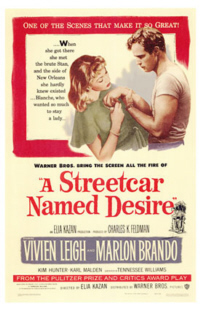 Marlon Brando and Vivien Leigh give outstanding onscreen performances in Tennessee William's play brought to Hollywood by Elia Kazan. Strongly supported by Kim Hunter and Karl Malden, Leigh is unforgettable as the decaying Southern belle in this profoundly human drama captured on film. TVO's Saturday Night at the Movies brings this film classic to the small screen.
Marlon Brando and Vivien Leigh give outstanding onscreen performances in Tennessee William's play brought to Hollywood by Elia Kazan. Strongly supported by Kim Hunter and Karl Malden, Leigh is unforgettable as the decaying Southern belle in this profoundly human drama captured on film. TVO's Saturday Night at the Movies brings this film classic to the small screen.
A Streetcar Named Desire Video Trailer (IMDb)
It’s a steamy summer night. I hear a police siren screaming through the open window along with the heavy, humid evening air. In the residential area where I sit as I write this entry, chances are about equal that the emergency vehicle may be on its way to investigate the latest corner store hold-up or that it may arrive at the scene of some form of domestic violence.
It would be easier if we could all just pretend that such heinous things almost never happen. But they do happen. And it can happen right in our own backyard: A twelve year old girl participates with her much older boyfriend in the cold-blooded murder of three of her immediate family members. A man in a quiet suburb of our city blows up his wife and children in a fireball of revenge, murder and suicide. A friend of mine lives with daily uncertainty as to whether her estranged husband’s anger and frustration will degenerate from verbal to physical violence.
It is not a pretty picture. There goes the siren again. I could close the window to keep the noise of the siren out – but that wouldn’t really make the problem go away. More than likely, in this large urban area, there will be some incident of domestic violence that unfolds over the next few hours that the police will have to investigate. Most of us, as bystanders, look on with eyes wide shut to the horror and the pain of the domestic turmoil that lives next door to us.
Tennessee William’s A Streetcar Named Desire has been committed to cinematographic immortality in the magnificent 1951 adaptation of his stage play directed by Elia Kazan. The Interviews (July 7/07) on TVO reference William’s full participation in the Hollywood version of this stage masterpiece. Much could be said of the excellent dialogue provided by Williams that serves as the basis for creating the unforgettable characters of the screenplay.
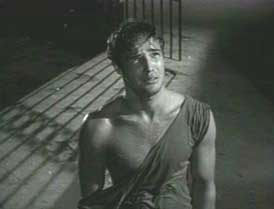 Kazan had previously directed the Broadway version of the stage play in New York . Although many of the award winning elements such as the taut jazz music score, the subtle use of lighting, the black and white cinematography, and the evocative set design contribute enormously to the success of the production, to me it is the casting that makes the movie. (Oh! Did I mention costume design? Stanley ’s T-shirts, of the ripped or unripped variety, are just - well - Stanley ’s T-shirts. But Blanche’s fabulous flouncy
Kazan had previously directed the Broadway version of the stage play in New York . Although many of the award winning elements such as the taut jazz music score, the subtle use of lighting, the black and white cinematography, and the evocative set design contribute enormously to the success of the production, to me it is the casting that makes the movie. (Oh! Did I mention costume design? Stanley ’s T-shirts, of the ripped or unripped variety, are just - well - Stanley ’s T-shirts. But Blanche’s fabulous flouncy 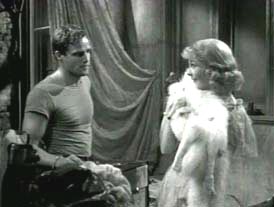 summer dresses together with the other finery of the fading southern belle – now there’s some material for the costume designer to work with!)
summer dresses together with the other finery of the fading southern belle – now there’s some material for the costume designer to work with!)
When the stage play emigrated from New York to Hollywood , Williams the writer and Kazan the director as well as the majority of the original cast went along for the trip. It was a move that was considered unusual. A key decision was made, however, concerning the part of “Blanche”. (Ugh! Yuck! I can hardly bring myself to say the name the way they do in the film. The southern accent softens it up some in English, but still, the sound is so preposterously nasally and harsh, so totally unrefined and unromantic compared to the way the name is said in the original language!)
The decision was made to give Jessica Tandy’s role to the British “Blanche” – Vivien Leigh. Leigh had developed her version of the role in London under the stage direction of her husband, Laurence Olivier. Apparently the decision was made in Hollywood on the basis of the anticipation of greater box office success with Leigh’s name headlining. Whatever the reasons for the decision, it turned out to be a good one. Leigh is riveting as the coquettish and emotionally fragile Blanche.
Sadly, the line drawn between the onscreen invention and real life may have been more blurry than one cares to discover. If the details of stories concerning Leigh’s troubled marriage to the longsuffering Laurence Olivier are more than tabloid gossip, and if the even more troubling observations of nymphomaniac behaviour are factual, one certainly has something to think about.
Perhaps it is the case that Vivien Leigh played the part of Blanche like no other. Perhaps our delight in the convincing portrayal of the character of Blanche Dubois preserved forever on film does not take into account the personal pain that went into the performance. Leigh’s own struggle with mental illness in the form of bipolar depression did not end when the curtain came down. It had devastating real life consequences, just as it does for people in all professions and walks of life.
The character Blanche finds herself in the unfortunate position of not only being the poor relative come to call, but of getting between her sister, Stella, and her husband, Stanley. Stella and Stanley have one of those crazy sorts of relationships where they are fighting like cats and dogs one minute and all over each other the next minute. (It seems to be going around. The couple in the apartment upstairs, Steve and Eunice, spend their time doing pretty much the same thing.)
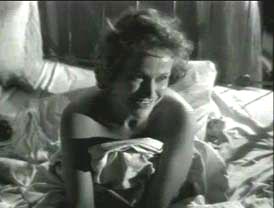 Stanley has a reputation for being a bit of a hell-raiser. It doesn’t take much; a dig from Blanche about how Stanley is “too common” for her sister, the music on the radio played a little too loudly interrupting the poker game. Stanley’s temper flares. He is a violent man. The alcohol doesn’t help either. Of course, as Stella is quick to add, after such incidents, Stanley is “really very ashamed of himself” and is “as good as a lamb”. Stella is all too willing to forgive and forget. In fact, Stella freely admits that Stanley ’s unpredictable and dangerous streak was something she was “sort of thrilled by” as per the “broken lightbulbs on the honeymoon” rampage.
Stanley has a reputation for being a bit of a hell-raiser. It doesn’t take much; a dig from Blanche about how Stanley is “too common” for her sister, the music on the radio played a little too loudly interrupting the poker game. Stanley’s temper flares. He is a violent man. The alcohol doesn’t help either. Of course, as Stella is quick to add, after such incidents, Stanley is “really very ashamed of himself” and is “as good as a lamb”. Stella is all too willing to forgive and forget. In fact, Stella freely admits that Stanley ’s unpredictable and dangerous streak was something she was “sort of thrilled by” as per the “broken lightbulbs on the honeymoon” rampage.
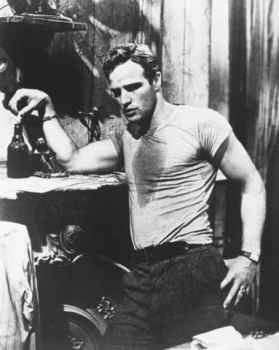 It seems that Stella doesn’t always understand what sets her husband off. She walks right into the ambush time and time again. Perhaps in this way Blanche really does understand Stanley better. It seems that Stella is too taken up with living in the moment, taking the good with the bad, to really delve into what’s going on with Stanley . Stanley might think it perfectly acceptable to observe that he has pulled Stella down off of “one of those high columns”. But as far as Stanley is concerned, he needs his wife to keep him up there in her regard on the top of one of those white marble pedestals; “every man a king in his own home”. Sister Blanche is a threat. He’ll do just about anything to get rid of her.
It seems that Stella doesn’t always understand what sets her husband off. She walks right into the ambush time and time again. Perhaps in this way Blanche really does understand Stanley better. It seems that Stella is too taken up with living in the moment, taking the good with the bad, to really delve into what’s going on with Stanley . Stanley might think it perfectly acceptable to observe that he has pulled Stella down off of “one of those high columns”. But as far as Stanley is concerned, he needs his wife to keep him up there in her regard on the top of one of those white marble pedestals; “every man a king in his own home”. Sister Blanche is a threat. He’ll do just about anything to get rid of her.
Stanley is a pretty direct, "no nonsense" type of guy. Blanche, on the other hand, could not bring herself to be “straight” even if her life depended on it: “Straight? What’s straight? A line can be straight, but the human heart . . .?” Indeed, Blanche does have quite the problem with what she calls her little “fibs”. It’s not so much that she intends to deceive people – “I don’t want realism! I want magic! I try to give people that. I do misrepresent things. I don’t tell the truth. I tell what ought to be the truth. If that’s a sin, may I be punished for it!”
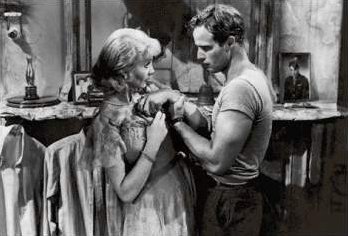 It seems that Blanche is so caught up in her imagined reality of la noblesse déchue that she must stay out of the harsh light of day in order to preserve some of her most cherished ideals. She lives by the kinder, gentler light of a paper Chinese lantern placed carefully over the naked electric lightbulb.
It seems that Blanche is so caught up in her imagined reality of la noblesse déchue that she must stay out of the harsh light of day in order to preserve some of her most cherished ideals. She lives by the kinder, gentler light of a paper Chinese lantern placed carefully over the naked electric lightbulb.
But even as her world is coming unravelled, Blanche is very strong on at least this one point: “Some things are not forgivable. Deliberate cruelty is not forgivable. It’s one thing I’ve never been guilty of.” Stanley may be deliberately cruel to her, the townspeople of her hometown, the accusatory Mr. Shaw, and even life itself may be cruel to her. But of this one thing, Blanche is very certain; she herself has never stooped so low as to engage in deliberate cruelty.
Or has she?
You never know with Blanche . She tells quite a different tale when she finally explains to her suitor, Mitch, what had actually happened to her first husband many years before. In a moment of vulnerability with Mitch, Blanche reports saying that she told her emotionally fragile young husband, “You are weak. I’ve lost respect for you. I despise you!” The young man proceeded to go off and shoot himself in the head.
I don’t know. Those sound like pretty cruel words to me.
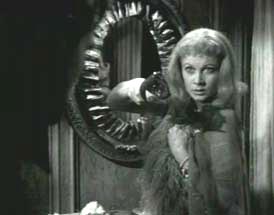 The conscious mind including the human conscience is a remarkable thing. Who can explain exactly how it works? I remember once hearing a doctor who worked at a mental health institution saying, “You know, if only people could know for sure that they were forgiven, half the folks here could go home.” I have no idea, all these years later, who that professional was, how credible his statement was or even how near to the mark his estimates are. I just know that it’s a statement about mental health that has to apply to some of the people some of the time.
The conscious mind including the human conscience is a remarkable thing. Who can explain exactly how it works? I remember once hearing a doctor who worked at a mental health institution saying, “You know, if only people could know for sure that they were forgiven, half the folks here could go home.” I have no idea, all these years later, who that professional was, how credible his statement was or even how near to the mark his estimates are. I just know that it’s a statement about mental health that has to apply to some of the people some of the time.
I reckon that Blanche may very well fit into that category. Blanche finds deliberate cruelty to be unforgivable in others and in herself. She is never quite able to get over the event. It is easier to rewrite history, to invent an alternate personal scenario, to keep up a façade with the whole world than to face the ugliness in her own soul. The “shimmering” as Blanche calls it, has taken up a great deal of her energy in order to maintain appearances.
 When Mitch later confronts her with the fiction of her recent goings on as the mistress of the deteriorating Belle Rive estate, Blanche maintains rather desperately, “But I never lied in my heart!” For her, the latest invention of the unexpected Caribbean cruise that she weaves together for Stanley is a truer version of reality. Almost lost in her flight of fancy, in her own mind, Blanche is truly a cultivated woman possessing an unparalleled “beauty of the mind, a richness of spirit and a tenderness of heart” instead of a broken-down, penniless alcoholic with sordid sexual habits.
When Mitch later confronts her with the fiction of her recent goings on as the mistress of the deteriorating Belle Rive estate, Blanche maintains rather desperately, “But I never lied in my heart!” For her, the latest invention of the unexpected Caribbean cruise that she weaves together for Stanley is a truer version of reality. Almost lost in her flight of fancy, in her own mind, Blanche is truly a cultivated woman possessing an unparalleled “beauty of the mind, a richness of spirit and a tenderness of heart” instead of a broken-down, penniless alcoholic with sordid sexual habits.
The world soon closes in on Blanche as she finds herself being taken away to the asylum. After a few moments of hysterics, Blanche regroups and manages to put forward a heart wrenching air of dignity as she walks into her unknown future on the arm of the attendant: “Whoever you  are, I’ve always depended on the kindness of strangers.”
are, I’ve always depended on the kindness of strangers.”
My, what a wild ride we’ve had on the Streetcar Named Desire. Canadian film maker Harry Rasky, quoted in the Interviews (July7/07), sums it up well: “He (Tennessee Williams) gave me such a greater patience and understanding of people who are fragile. He made me understand that you have to love people for what is wrong with them rather than for what is “great” about them. Because what is “great” about them may be what made them fragile.”
In this insane, mixed up and sometimes cruel world Williams does a beautiful job of showing us that we could all use a little more understanding in the midst of the fragility of our human condition.
Suggested Explorations in Cyberspace:
- The song “It’s Only a Paper Moon” – one of Blanche’s favourites . I’m particularly partial to the Ukelele Ike (Otherwise known as Jiminy Cricket) version available for download here.
- “What?! You’re going bowling now?!” Help for couples stuck on the crazy cyle: his’n’her needs – respect and tenderness. Video
- Living through an abusive relationship- One woman escapes the shark pool of a controlling relationship; another finds hope and love
- Fib Fixer: learning to trust (and be trustworthy) so you can throw away the paper lanterns
- Handling turbulent times in domestic relationships productively
Gentlemen Prefer Blonds (1953)
Life on a Bungee Cord
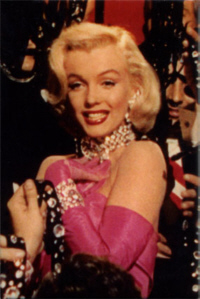 The luminous Marilyn Monroe does some late night entertaining on TVO with a sparkle that comes from more than just diamonds.
The luminous Marilyn Monroe does some late night entertaining on TVO with a sparkle that comes from more than just diamonds.
“They’ll pay you thousands of dollars for a kiss and fifty cents for your soul.” – Marilyn Monroe
Read the entire entry from the archives. Originally aired with "The Seven Year Itch" in combination with a TVO Interview featuring those who knew and worked with Marilyn.
Murder Ahoy (1964)
Under Full Sail
 Margaret Rutherford performs admirably in “Murder Ahoy”, an MGM production that spoofs the murder mystery genre while jazzing up the main character, Miss Marple, in an updated version that looks curiously dated.
Margaret Rutherford performs admirably in “Murder Ahoy”, an MGM production that spoofs the murder mystery genre while jazzing up the main character, Miss Marple, in an updated version that looks curiously dated.
A raccoon left his calling card at the front door of our cottage last night. At least, that is what we surmise has happened in the ongoing saga of the “battle with the beast”. A pile of poop resting on the welcome mat added to the infamy of this most unwelcome house guest whose previous exploits include awakening the household in the wee hours of the morning with his caterwauling during a particularly unneighbourly altercation.
“Bandito” the raccoon, as he is called by the neighbour kids, apparently has few compunctions about his anti-social behaviour, preferring instead to exercise squatter’s rights by sleeping it off in someone’s tree house during the day. Is he the guilty party who got into our trailer over the winter, chewing and peeing his way into everlasting infamy? Or was it some other raccoon? We may never know since we have no sharp witted Miss Marple in the neighbourhood to investigate the case.
Such was not the misfortune of the late night Agatha Christie mystery, Murder Ahoy. Well, actually, it is not a real Agatha Christie murder mystery. It was a put-up job put over by MGM. There is but a trace, supposedly, of the plot details of an actual Agatha Christie novel. It is the last, and some would say the weakest, of a series of four MGM confections from the 1960s employing the considerable comic talents of Margaret Rutherford as Ms. Christie’s famous female sleuth, Miss Marple.
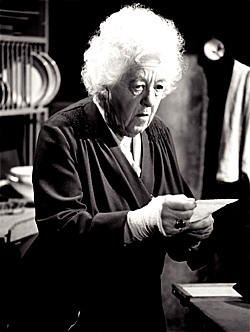 Funny that. The Rutherford incarnation of the famous Miss Marple bears an uncanny physical resemblance to my grandmother. She is nothing like my grandmother in terms of personality, but sometimes the quizzical expression on Rutherford’s face reminds me so much of my own dear gran. Not that I can imagine my granny parrying with a deadly foe as the 1931 former women’s fencing champion, dancing the twist in a formal evening gown (in another film in the series), nor cooking up a chemistry experiment to identify the poison in question – although I do remember my grandmother cooking up a really mean nut fudge in the kitchen when I was a kid.
Funny that. The Rutherford incarnation of the famous Miss Marple bears an uncanny physical resemblance to my grandmother. She is nothing like my grandmother in terms of personality, but sometimes the quizzical expression on Rutherford’s face reminds me so much of my own dear gran. Not that I can imagine my granny parrying with a deadly foe as the 1931 former women’s fencing champion, dancing the twist in a formal evening gown (in another film in the series), nor cooking up a chemistry experiment to identify the poison in question – although I do remember my grandmother cooking up a really mean nut fudge in the kitchen when I was a kid.
But Margaret Rutherford is not much like the Miss Marple of Agatha Christie’s wonderful murder mystery novels. Miss Jane Marple has been described as “a tall, thin, elderly lady, sedate, quiet-spoken, and dignified, living in a quiet little cottage in a quiet little English village” patterned after Christie’s own grandmother. Neither is she like other famous interpretations of the role such as those brought to us by Angela Landsbury, Joan Hickson, and Geraldine McEwan. Margaret Rutherford is able to say most emphatically to Detective Inspector Craddock (who accuses her of being “unhinged” and perhaps “not entirely herself”) - “Chief Inspector, I am always myself!”
No, I am the one who becomes more than slightly unhinged, quite unlike myself, leaping about the kitchen when the CBC announces that they are planning to screen another Christie murder mystery with Geraldine McEwan. I must admit to going a bit squirrelly. During the actual viewing, I take no phone calls, the kids go temporarily neglected, my poor husband knows better than to interrupt me: I am concentrating! Intensely.
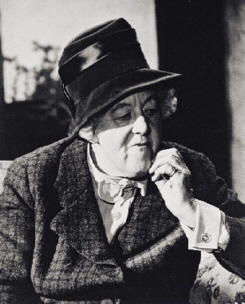 Doubtless Ms. Rutherford’s version of Miss Marple is consistently presented with her own unique flavour. It may not have a lot in common with Agatha Christie’s character, but it is lots of fun. Rutherford’s Miss Marple is entirely at home belting out “Rule Brittania” and barking out “Damn the topedoes! Full speed ahead, Mr. Stringer!” Rutherford’s Marple is earthy and irrepressible as well as intelligent and resourceful.
Doubtless Ms. Rutherford’s version of Miss Marple is consistently presented with her own unique flavour. It may not have a lot in common with Agatha Christie’s character, but it is lots of fun. Rutherford’s Miss Marple is entirely at home belting out “Rule Brittania” and barking out “Damn the topedoes! Full speed ahead, Mr. Stringer!” Rutherford’s Marple is earthy and irrepressible as well as intelligent and resourceful.
Critics have labeled the other performances in this particular episode of the MGM series as especially wan. Lionel Jeffries as Captain Rhumstone does more than passable service in my books as the ridiculous figurehead skipper. Nicholas Parsons as the brisk Dr. Crump bustles in and out, moonlighting as the county coroner between stops in delivering babies. Bud Tingwell as the unsuspecting Detective Inspector Craddock is thoroughly thorough without being too obviously incompetent when shown up by Miss Marple’s sleuthing talents. Stringer Davis is wonderfully understated as Rutherford’s faithful sidekick and partner in crime solving. Joan Benham gives good service playing opposite Lionel Jeffries as the longsuffering Matron Fanbraid.
 The supporting cast made up of many familiar British actors of the day does its job of supporting the main character as played by Margaret Rutherford. It may be a little weak topside, but when Ms. Rutherford is under full sail, as in all four of these entertaining flicks, who really cares?
The supporting cast made up of many familiar British actors of the day does its job of supporting the main character as played by Margaret Rutherford. It may be a little weak topside, but when Ms. Rutherford is under full sail, as in all four of these entertaining flicks, who really cares?
What can I say? I like them all. I certainly do have preferences and favourites when it comes to Agatha Christie mysteries and Miss Marple renditions. I enjoyed Rutherford’s early 60’s “jazzy” version on its own merits. It may not please the most demanding of connoisseurs, but then, after midnight on a Saturday Night at the Movies, my priority is just to kick back, laugh a little, and relax. Ms. Rutherford doesn’t seem to be taking herself too seriously, so why shouldn’t I just follow her lead?
Suggested Reading:
- Follow Margaret Rutherford’s lead and participate in the “BBC’s Last Night of the Proms” belting out “Rule, Brittania” in the privacy of your own home (if you wish)! There are even ring tones available for the particularly rabid fans among us.
- A skeptical investigator re-examines an ancient whodunit about a well-known personage and comes to a surprising conclusion
- Who’s the captain of your ship?



